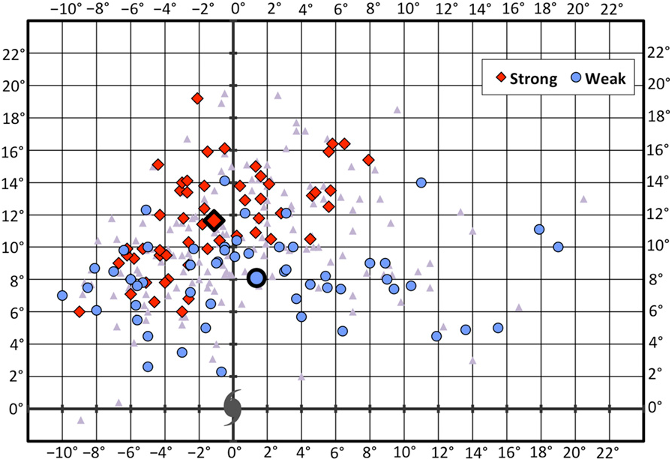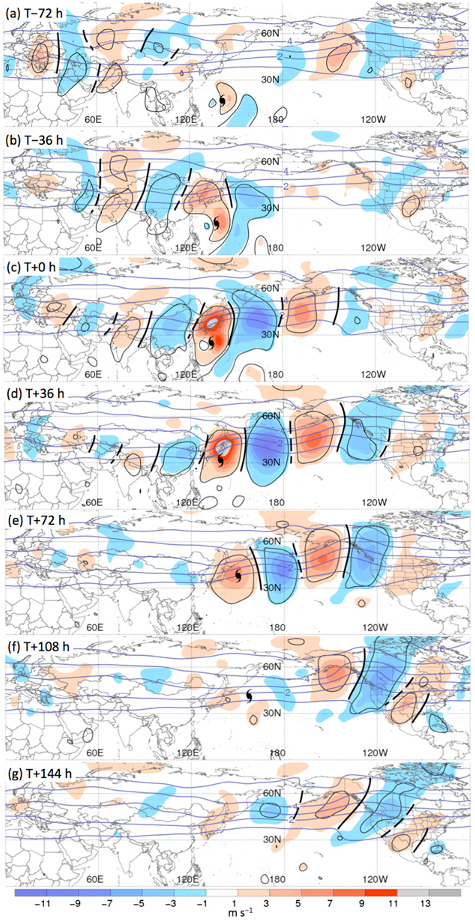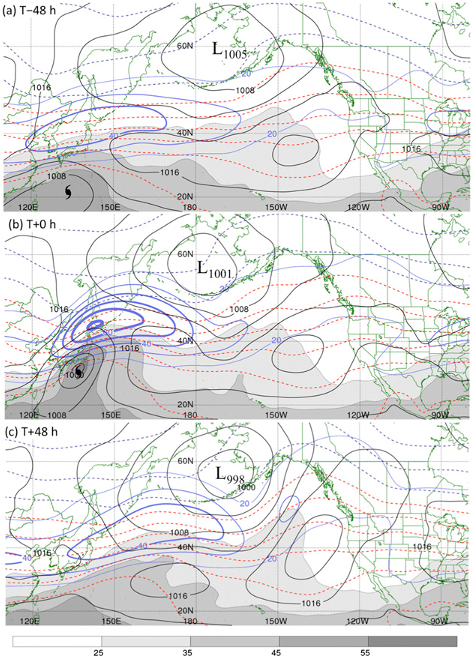Q2. What are the future works mentioned in the paper "A composite perspective of the extratropical flow response to recurving western north pacific tropical cyclones" ?
The findings of this study suggest a variety of avenues for future research. For example, the onset of a trough over centralNorthAmerica following WNP TC recurvature indicated by the composite analysis of all recurving WNP TCs suggests a possible connection between recurving TCs and outbreaks of severe convection over the U. S. central plains. Although this study did not directly address predictability, it provides a potential framework in which to evaluate numerical model forecast error and uncertainty associated with the TC–extratropical flow interaction for recurving TC cases and other weather phenomena associated with divergent outflow that may impinge strongly upon the PV waveguide [ e. Many studies suggest that large numerical model forecast errors may result from a failure of the numerical model to adequately capture diabatically driven ridge amplification ( e. g., Davies and Didone 2013 ; Gray et al. 2014 ), whether associated with recurving TCs ( e. g., Henderson et al. 1999 ; Torn 2010 ), mesoscale convective systems ( e. g., Dickinson et al. 1997 ; Rodwell et al. 2013 ), or warm conveyor belts of explosively deepening extratropical cyclones ( e. g., Doyle et al. 2014 ).





